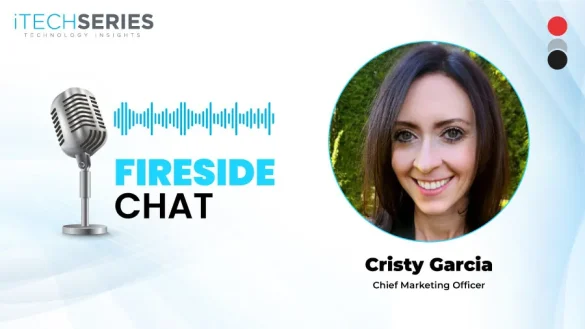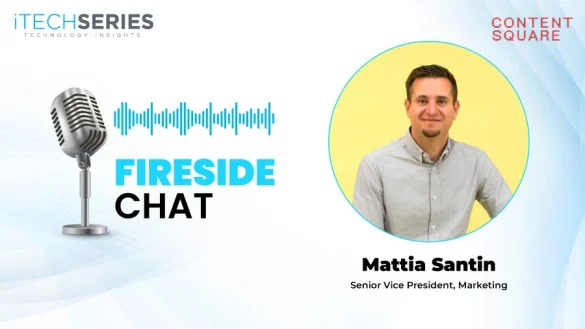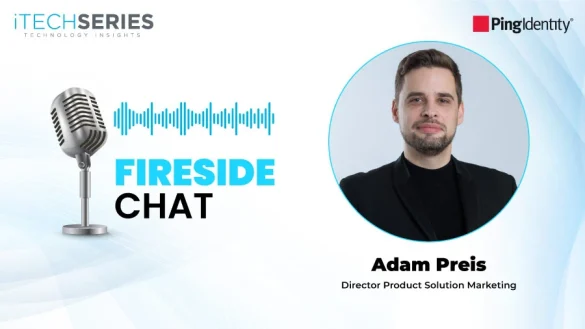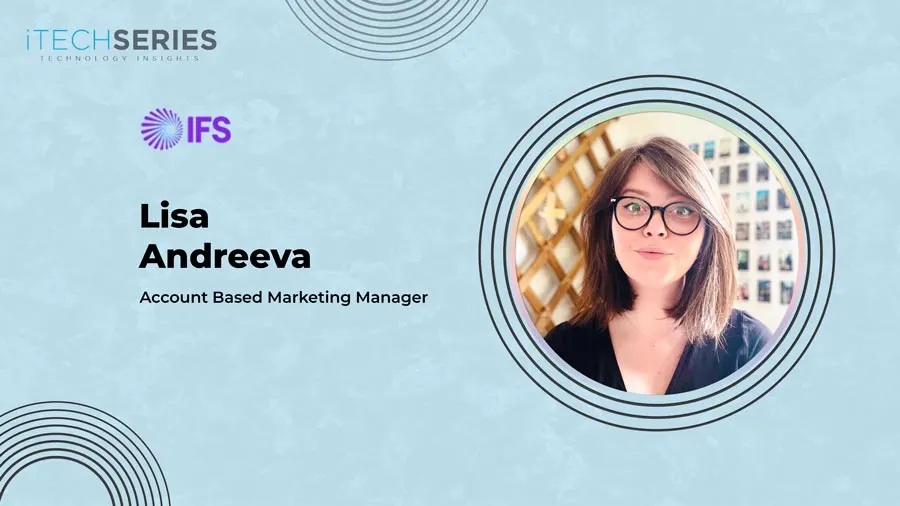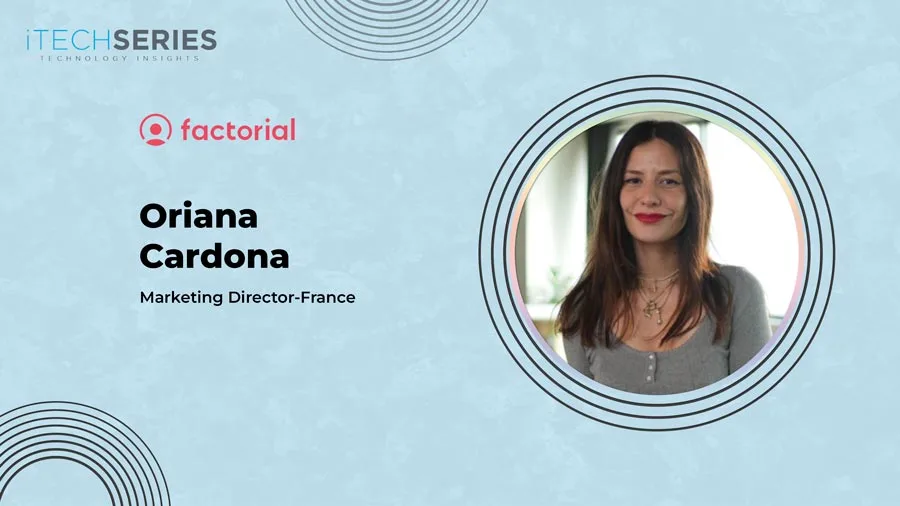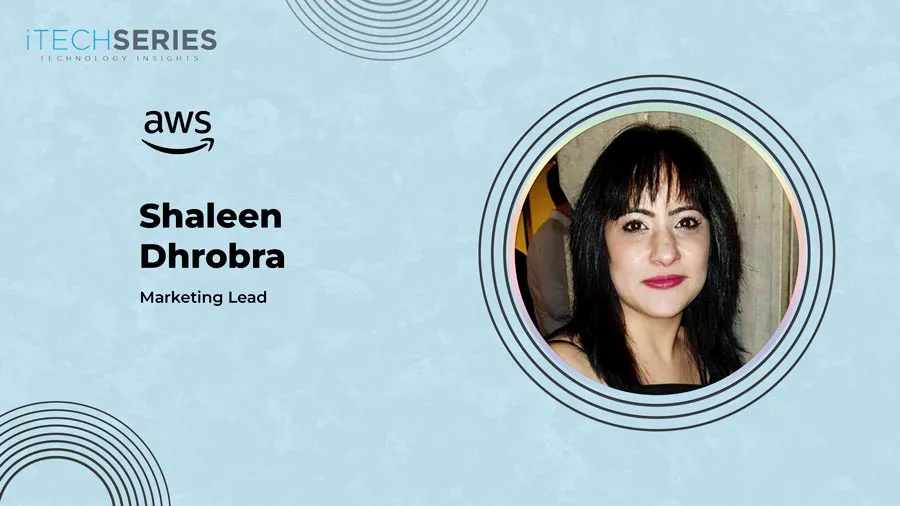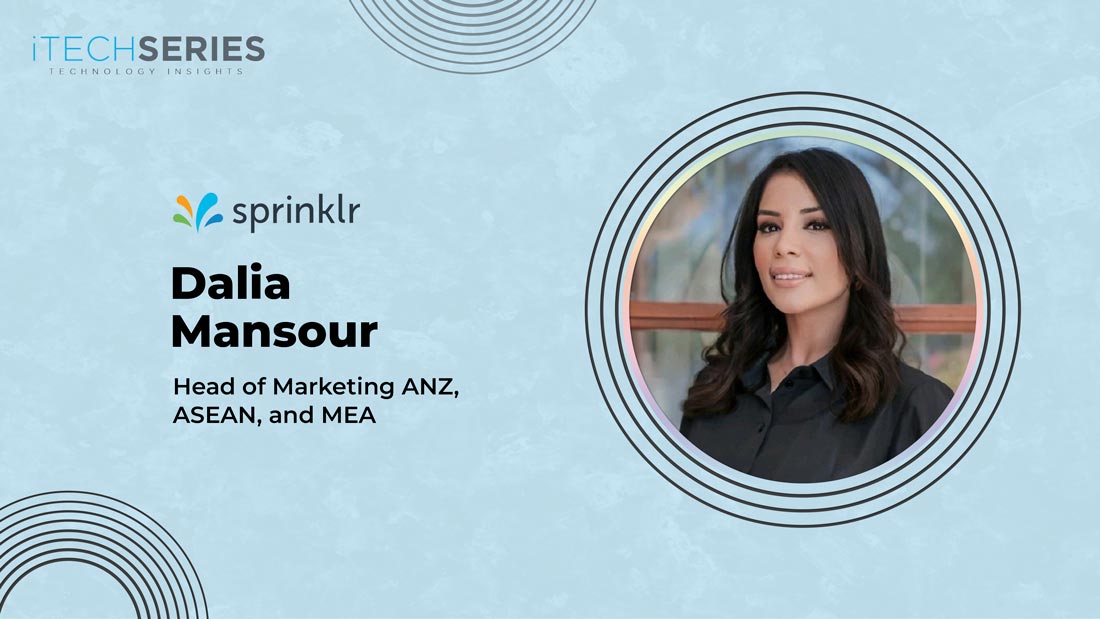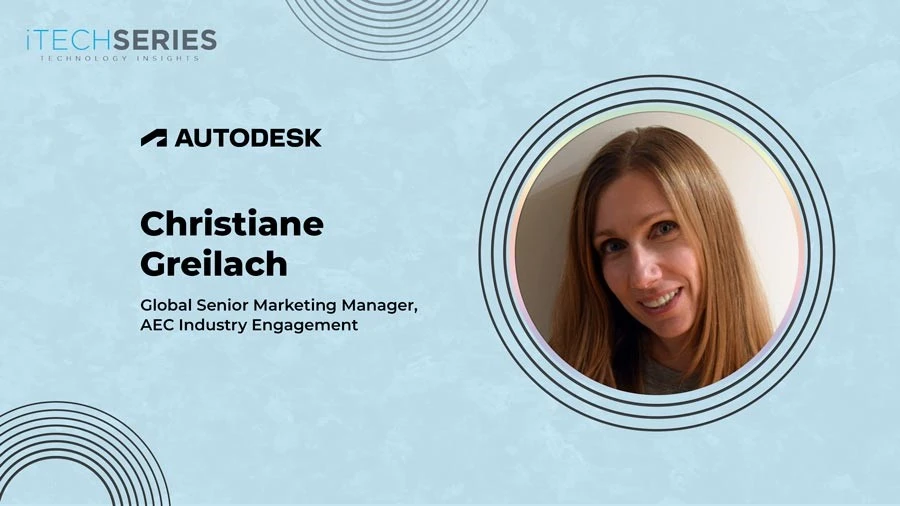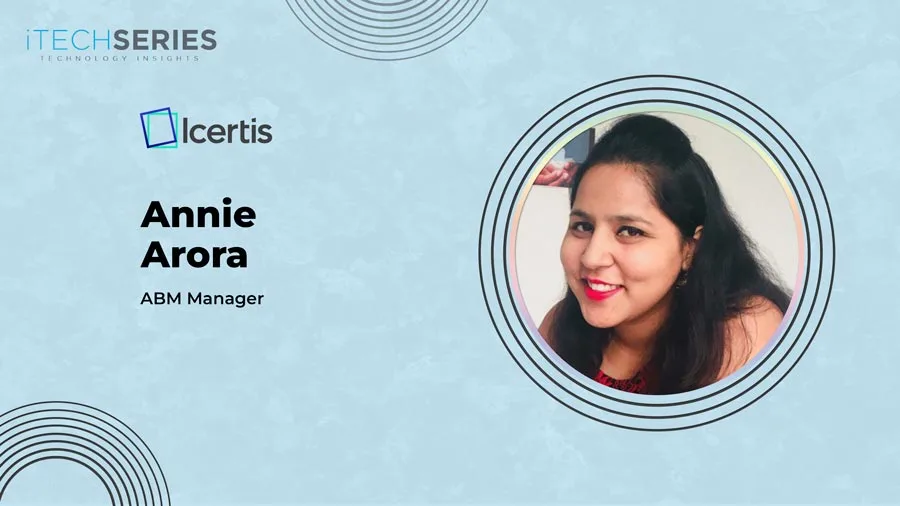Mariie Vélez, Global Demand Generation and ABM Manager at Thales Cybersecurity Products, shares her decade-long journey across agency and corporate marketing. She discusses scaling global demand generation, orchestrating ABM, aligning sales and marketing, leveraging data for measurable impact, localizing campaigns across regions, enabling sales teams, and accelerating execution with AI to drive pipeline growth.
Mariie, it’s great to have you here. Could you share a bit about your background and the key milestones in your marketing journey?
I have 10+ years in marketing, mostly in B2B tech, driving demand generation and ABM for global campaigns. I started on the agency side and then moved into corporate marketing at a content agency, so building strong content is second nature. When I transitioned fully into corporate roles, I began in smaller marketing teams and am now in global strategy for one of Thales’ identity solutions.
Speaking three languages has been a major advantage, helping me adapt messaging to cultural nuances and connect with diverse markets. Becoming a first-time mom has been a crash course in project management and stakeholder alignment—only the “stakeholder” doesn’t wait for coffee. It’s sharpened my prioritization skills and ability to read the room, which I rely on when running multiple campaigns across teams.
At my core, I focus on building marketing programs that drive measurable revenue. I enjoy proving campaign impact on the pipeline and finding creative ways to enable sales. I make it a point to understand what they need, align with other functions, and create tailored plays to support them. I’m also a data enthusiast—A/B testing feels like a treasure hunt, and I love digging into the “why” behind results. With over 10 years of experience in marketing, I’ve spent my career mostly in the B2B tech space—demand generation and ABM, running global campaigns. Speaking three languages has been a big asset—it’s helped me understand cultural nuances and tailor campaigns so they resonate in different markets.
How do you adapt campaigns for LATAM, Europe, APAC, and North America while ensuring performance stays measurable and consistent?
I start with a global campaign framework—core messaging, goals, and baseline metrics—then layer in regional adjustments. That could mean tweaking messaging to align with local regulations in Europe, localizing the content, or prioritizing one format over another one.
The real key is having both shared KPIs and regional flexibility. Everyone tracks the same funnel metrics—MQA to Opp conversion rates, influenced pipeline—but regions can add local success indicators, like webinar attendance in markets where virtual events perform better.
We also centralize reporting so we can compare apples-to-apples, but I review it regionally to spot what’s working in one place that might be worth replicating elsewhere.
In one recent campaign, we borrowed an AMER content format that was over performing and tested it localized in LATAM—the cost per lead dropped by nearly 30%. That’s the benefit of building for global consistency but allowing for local flexibility.
In your view, what are the must-have elements of a demand generation strategy that truly drive pipeline growth?
It starts with an offer worth sharing. If the asset, event, or experience isn’t valuable enough for the target audience to stop what they’re doing, no amount of intent, personalization, or budget allocation will save it. I try to focus first on what’s going to make them stop—whether that’s a tool, a high-value webinar, or an asset with a unique point of view they can’t get elsewhere.
Once that’s nailed, then it’s about making sure the right people actually see it—matching intent data with ICP and validating that with sales input. From there, I think in terms of a journey, not a single touch. Every follow-up, from nurture emails to sales outreach, builds off the offer they engaged with, so the experience feels connected.
The other piece is sales readiness. Before launch, I make sure sales know why this matters and how to follow up. Without that, even the best offer dies in the funnel.
One thing I’ve learned to avoid is overloading a campaign with too many CTAs or angles—it dilutes focus and makes measurement messy. When I’ve run campaigns with one strong, well-positioned offer and a clear follow-up plan, I’ve seen conversion rates double without increasing spending.
“The biggest shift I see is that marketing is no longer measured just on leads—it’s measured on revenue impact across the full customer lifecycle.”
How is marketing’s role evolving as collaboration with sales, customer success, and other revenue teams becomes stronger?
The biggest shift I see is that marketing is no longer measured just on leads—it’s measured on revenue impact across the full customer lifecycle. That means I’m not just handing leads to sales; I’m building joint plays for acquisition, expansion, and retention. For example, I’ve worked with cross-functional teams on adoption and upsell campaigns, using the same campaign planning discipline we apply to net-new. It’s not just “marketing to prospects” anymore—it’s marketing to accounts at every stage to protect and grow revenue.
With PMM, I make sure our messaging is market-relevant and competitive. With field marketing, I align on regional priorities so campaigns land well in each market. And with sales enablement, I focus on giving reps the tools they need—like campaign briefs, sales playbooks, and ready-to-use assets—to act quickly on leads. The best results come when we’re aligned from the start: same audience definition, same offer, same follow-up plan. It’s a shift from “marketing creates, sales execute” to “we design the motion together,” which makes it easier to measure our combined impact on the pipeline.
Can you walk us through your process for scaling an ABM program from a pilot to a repeatable, high-impact framework?
I start with account selection and agreement with sales—clear criteria on ICP, intent signals, and deal potential. If sales aren’t aligned here, everything else falls apart.
From there, I map the offer first. For Tier 1 accounts, that might be something highly personalized, like a custom roundtable event or exclusive content. For lower tiers, it’s still tailored but scalable, like industry-specific webinars.
Next is orchestration—aligning paid ads, email, events, and SDR outreach so every touch feels connected. Sales enablement is built in from the start: they get account insights, messaging, and the “why” behind the campaign so they can follow up with context.
I like to measure pipeline creation, deal progression, and influenced revenue, not just engagement. A couple lives ago, I led an ABM pilot with this approach and delivered 3x higher average deal size compared to inbound leads, largely because the offer and follow-up were built specifically for those accounts.
One thing I’ve learned to avoid is over-customizing every single element—it eats resources and slows execution. Focus deep personalization on top-tier accounts, and keep scalable plays for the rest.
How do you orchestrate paid media, content, and performance tracking into a unified, results-driven program across multiple geographies and buying stages?
I build backwards from the goal. If the goal is pipeline, I define what conversion looks like at each stage—click to MQA, MQA to MQL, MQL to opportunity—and then design content and paid activation around moving people through that path. In a recent campaign, we led with the webinar as the main entry point. We promoted it through LinkedIn ads, Demandbase display, and targeted emails. After the webinar, attendees and registrants were added to a retargeting campaign and nurtured with gated assets that dug deeper into regional challenges. That sequence kept engagement high, and every asset moved prospects further down to a clear call to action for a trial.
We track results at the full-funnel level—cost per lead, conversion rates, and influenced opportunities—so we know exactly how each stage contributes. Planning it as one connected journey makes it easier to see where we were winning and where to adjust in real time.
How do you decide where to allocate your marketing budget across channels to get the best impact and efficiency?
I start with the goal, then choose channels that fit that objective. If it’s lead gen, I’ll focus on channels that convert well—LinkedIn, targeted content syndication, or high-intent search. If it’s brand awareness, then display, YouTube, or Quora become more valuable because they reach the top of the funnel at scale.
What I’ve learned is that the number of channels and accounts in play can make or break results. If you spread the budget too thin, you end up with vanity metrics—impressions and clicks—but no meaningful pipeline. Multi-touch, multi-channel is important, but it has to be deliberate. I’d rather invest in fewer, higher-impact channels and accounts that match the goal than try to be everywhere at once.
This approach has paid off in campaigns where we tightened our focus—spending on the 2–3 channels most likely to drive the next funnel stage—and saw both cost per opportunity and conversion rates improve.
How are you leveraging AI to plan campaigns, deliver personalization at scale, and strengthen analytics?
For me, AI is a time-saver and an enhancer, not a replacement. I use it in three main ways:
- Planning: Reviewing historical campaign data to spot patterns in which channels, content types, or audience segments perform best, so I can make faster, more data-backed budget and channel decisions.
- Personalization: Quickly generating variations of ad copy, email intros tailored to an industry or role, or localizing chatbot playbooks, then refining them so they stay on-brand and relevant. This helps when we’re running multi-region campaigns that need localized nuance without starting from scratch each time.
- Enablement & QA: I draft sales one-pagers, talk tracks, and follow-up emails from the campaign brief. I also use AI for first-pass localization checks.
A concrete win: for a recent campaign, I used AI to create persona-specific ad copy sets in less than a day. That speed meant we could launch multi-variant testing and identify the top-performing creative sooner than planned—allowing us to reallocate budget while the campaign remains live.
I don’t ask AI to set strategy. I use it to accelerate execution.
About Mariie Vélez
Mariie Vélez is a global marketing leader with over 10 years of experience driving demand generation and ABM programs for SaaS and B2B tech companies. Skilled in campaign strategy, content development, paid media, and localization, she has executed high-impact programs across LATAM, Europe, APAC, and North America. Fluent in three languages, Mariie specializes in aligning marketing with sales, leveraging data-driven insights, and delivering measurable revenue growth worldwide.


